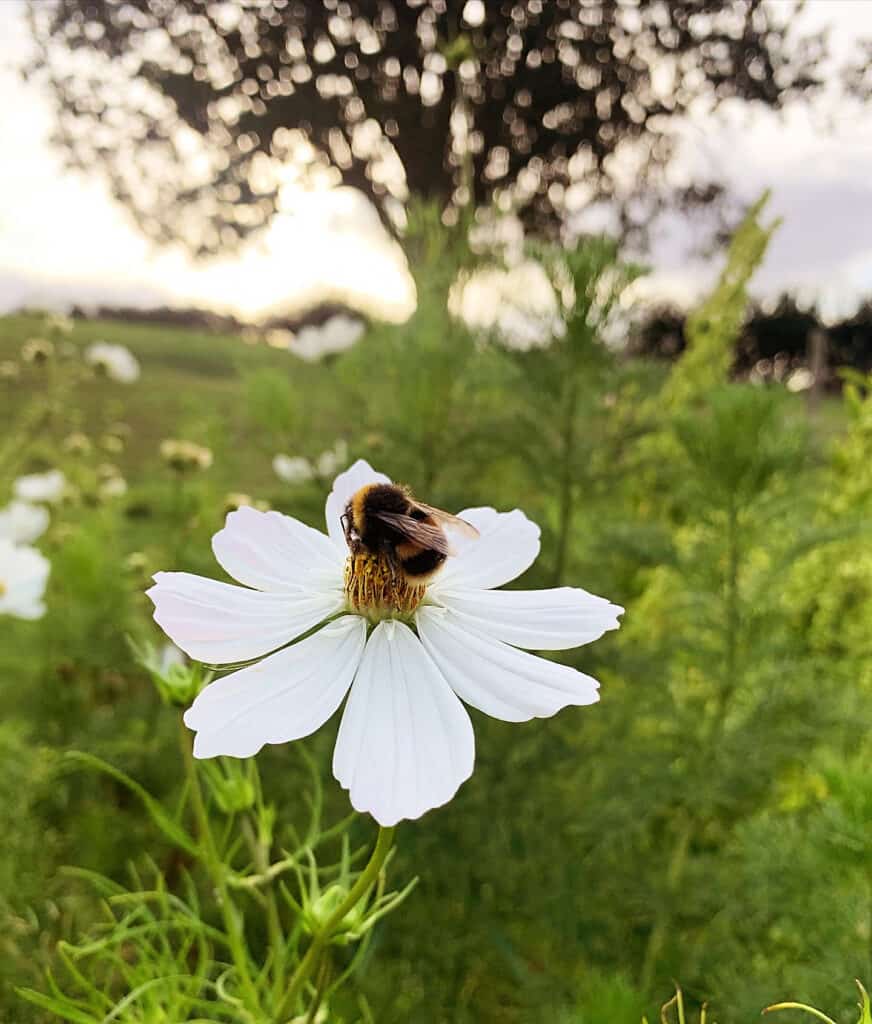Even the UN recognises World Bee Day – Charlotte Tombs shares some beewitching bee facts and how you can make a difference.

World Bee Day is now a ‘thing’. These tiny little insects get to have their own day in order to raise awareness about the threats made to pollinators by human activities. It has the approval of the United Nations no less, and the first World Bee Day was celebrated on Sunday 20th May 2018.
For me, one simple solution would be if we all aim to stop using pesticides in our gardens. By stopping the use of such harmful chemicals we could genuinely make a difference to our bee populations – and all those good insects which in time will come to our gardens and improve them, our environment and the world in general.
The bee’s knees
Here are some mind-blowing facts about our humble honey bee for you:
- In her (sorry chaps, but they only come in a ‘she’ variety) lifetime she will only make 1/12th of a teaspoon of honey. That’s the life’s work of 12 bees to sweeten your herbal tea!
- She will fly 375 miles and visit 70,000 flowers for that 1/12th of a teaspoon.
- Bees need a varied diet – there have been studies done and like us the more varieties of flowers they visit the better for them.
- A bumblebee’s tongue can be as long as 20mm and they often fly with their tongue extended as they collect nectar (a bit like a dog with its head out of a car window, I imagine).
- In the UK we have 270 bee species, and almost 250 of these are solitary. Only nine are types of honey bees, but they are all amazingly effective pollinators.
There are lots of things we can do to help the bee population in our gardens and cut flower patches and in doing this we really can all make a difference.
- Bee ladders
Bees need to drink water, but can often drown in a bucket or plant pot or wherever water collects. Simply tie a bit of string to the side of your water butt, and the bees can climb up the ‘ladder’. - Bee hotels
Provide or make bee/insect hotels – there is so much information online about this and it’s a great school holiday project for children. - Bee-friendly plants
Try to avoid double-petal blooms as bees like an open-faced flower. Foxgloves are like top floor restaurants for bees, especially as the spotted throats of these flowers act as runway markers for the bees to land and they can come back again and again as each flower opens up the spire. Lavender and honeysuckle aren’t just human favourites, they are a favourite for bees as well. And please do let that ivy grow on your garden wall, the flowers are a great source of bee food when there is not a lot else flowering.
If you visit your local garden centre they will have an area of pollinator-friendly plants to give you inspiration, along with lots of ideas on how you can help. - Let the wilderness in
If, like me, you have an embarrassing corner of your garden where the nettles have taken hold why not admit defeat? Leave it for the butterfly caterpillars of Red Admiral, Small Tortoiseshell, Painted Lady and Comma. By stopping the use of pesticides in your garden, over time it will benefit from more birds as they come to eat the bugs and the circle of life continues …
by Charlotte Tombs Charlotte offers workshops through the year – please see northcombe.co.uk for further details.


